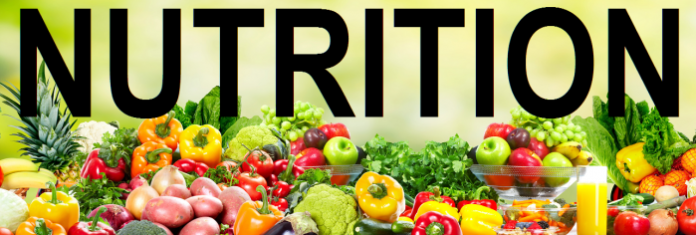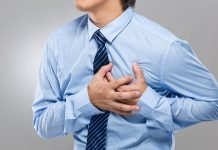
Facts About Nutrition – Food, Vitamins & Minerals

Food:
Food is generally considered as a source to satisfy hunger and to give energy. The function of the food in the body is to supply calories or energy, to provide materials for building and growth of tissues and to help in replenishing of worn out cells and tissues. The involuntary functions of the human organism need about 2500 to 3000 calories of energy per day.
There are six essential constituents in food;
(a) Energy producers:-
1. Carbohydrates
2. Protein
3. Fat
(b) Non energy producers:-
1. Vitamins
2. Minerals
3. Water
Carbohydrates, Proteins and Fat are known as the ‘Proximate Principles’ while vitamins and minerals are known as ‘accessory food factors’.
Calorie:
The measuring unit of heat is known as calorie. The calories present in Food Factors are as follows:
Carbohydrates = 4C per gram
Proteins = 4C per gram
Fat = 9C per gram
Proteins:
Proteins are organic nitrogenous substances that are useful both as building material and as material to replenish wear and tear in the body caused by functions that are physical, physiological and mental.
The basic constituents of proteins are Amino acids.
There are ten Amino acids which are described as essential. They are as follows:
1. Lysine 6. Arginine
2. Leucine 7. Methionine
3. Isoleucine 8. Threonine
4. Valine 9. Phenylalanine
5. Histidine 10. Tryptophan
These are called essential since these are not synthesized in the body and therefore these should be supplied through food only. Also these are essential for the body.
The presence of all the essential Amino acids makes a particular protein complete. Such a protein is known as ‘protein of higher biological value’ or ‘protein of the higher nutritional value’.
Amino acids methionine and choline are called lipotropic factors since these are the precursors of phospholipids which help in the transport of fat to and from the liver. Hence these are essential for the normal functioning of the liver.
The digestion and assimilation of protein has to be assisted by Vitamins A, B and C.
Growing children, boys, as well as women in pregnancy and lactation need more of protein.
Though Milk, skimmed milk and butter milk contain protein in small quantities, they are considered as the most suitable source of proteins.
Insufficient supply of protein causes poorly developed muscles and stunted growth.
Excessive consumption of protein causes headache, fatigue, pain and swelling in joints.
Carbohydrates:
Consumption of too much of carbohydrates causes an impoverishment of other essential ingredients in the diet.
Fat:
The basic constituents of fat are fatty acids.
Linoleic acid, Linolenic acid and Arachidonic acids are the essential fatty acids. These are polyunsaturated acids. These essential fatty acids should be supplied only through food. Since these are not synthesized in the body but are essential for the body.
Fatty acids may be ‘saturated’ and ‘unsaturated’ depending on the presence of full capacity number or less number of Hydrogen atoms. So fat is called ‘saturated fat’ and ‘unsaturated fat’ depending on the presence of saturated or unsaturated fatty acids.
Fatty acids are essential for the maintenance of the normal skin health. These also lower the blood cholesterol level. It also prevents and controls ‘Atherosclerosis’ or ‘Atheromatous heart disease’.
Fat helps in the assimilation of calcium. Fat makes the tissues firm. It collects under the skin and when it is in excess, it becomes a heavy layer hindering the easy movements of the joints.
Deficiency causes Foliculosis or Phrynoderma ie. Toad-skin.
Mineral Salts:
Mineral salts are considered to be building materials of the second class. There are about 20 minerals which play the vital role in the nutrition of the living organism. They are as follows;
1. Calcium 5. Magnesium 9. Lithium 13. Chlorine 17. Oxygen
2. Potassium 6. Manganese 10. Barium 14. Iodine 18. Hydrogen
3. Sodium 7. Zinc 11. Phosphorous 15. Silicon 19. Nitrogen
4. Iron 8. Copper 12. Sulphur 16. Fluorine 20. Carbon
Calcium, Phosphorous and Iron play a vital role in the nutrition of the human organism. About 1/25 part of the whole body consists of mineral salts.
The mineral salts activates the functions of the digestive system, kidneys etc.
Lack of mineral salts make bones, teeth, tissues, heart and kidneys weak.
Calcium:
Requirement:
About 1gm/day
Function:
Calcium is essential for the formation and building up of the bones, teeth and also to multiply the cells. Calcium is helpful in aiding the heart, nerve and muscle functions. It provides enzyme activation in the glands that secrete digestive juices. Calcium aids lactation in nursing mothers. It also helps in maintaining the quality of the blood stream. Vitamin D helps its absorption.
Calcium in the body is stored in bone.
Importance:
Deficiency of calcium causes general bodily weakness, softening of bones, especially at the joints, decay of teeth and rickets. People deficient in calcium will suffer too much bleeding since while bleeding takes place due to wound or injury, calcium bestows blood the quality of clotting when it comes in contact with the atmosphere air.
Sources:
Milk contains the highest percentage of calcium (About 6.12%). Egg, cheese, green vegetables are other sources.
Phosphorous:
Requirement:
About 1 gm/day
Function:
Every cell in the body contains phosphorous. The bones and teeth are made up of a combination of calcium and phosphorous which make calcium-phosphate. Phosphorous helps in the metabolism of calcium. Also it helps to multiply the cells and growth of the body.
Iron:
Iron is an essential part of blood. The hemoglobin in the blood, to the presence of iron, helps as a conveyor of oxygen to every part of the body and carbon-di-oxide back from every part of the body to lungs.
Lack of Iron causes anemia. This further result in the retarded growth, weakness of body and mind.
Vitamins:
Vitamins are the builders of the body.
Vitamins are classifieds as fat-soluble vitamins and water soluble vitamins.
Fat Soluble Vitamins – Vitamin A, D, E, K
Water Soluble Vitamins – Vitamin B, C, P
Vitamin A:
Daily Requirement: About 6000 I.U
Function:
Also called as epithelial cell protective vitamin. It protects and prevents from degeneration of the surfaces of cells of the entire digestive and respiratory tracts, linings of the genitor-urinary system, heart, blood vessels and all cavities. Vitamin A is also essential in the assimilation of calcium and phosphorous. Vitamin A is fat soluble.
Importance:
Vitamin A deficiency causes gall stones, apoplexy, cancer, night blindness, dryness of the eyes (xerophthalmia), bleeding between periods, psoriasis, bronchitis and asthma.
Vitamin B:
Function:
Vitamin B is useful in growth, repair, digestion, discharge of waste, muscle, nerve and skin action. Vitamin B keeps the brain, nerves, heart, liver, digestive glands, kidneys, body muscles healthy and strong. It also maintains digestion and appetite.
Importance:
Lack of Vitamin B causes Beriberi, varicose veins, laziness, fatigue, vascular dilation, slowing of heart, hyper- thyroidism, heart arrhythmias and piles.
Vitamin C:
Requirement: 50mg / day
Function:
Vitamin C is also known as ascorbic acid. Vitamin C maintains health of the capillary wall, increases body resistance, enhances healing of wounds, ulcers etc and also prevents scurvy.
Sources:
The richest source of Vitamin C is Gooseberry. It should be eaten raw. It contains Vitamin C equal to that of the juice from 20 oranges.
Vitamin D:
Requirement: 2000-4000 units / day
Function:
Vitamin D is essential for the metabolism of calcium and phosphorous. Pregnant women needs this for themselves and for the foetus growing in their womb.
Importance:
Lack of Vitamin D can lead to the damage of kidneys, rickets in children and osteomalacia in adults.
Sources:
Milk, milk products, fish liver oil and sun shine.
Vitamin E:
Requirement: 3mg / day
It is said to prevent abortion and cure sterility in men.
Vitamin K:
It helps the liver to synthesize prothrombin. Deficiency may cause liver damage and haemorrhagic (bleeding) manifestations.


![Licorice Medicinal Uses, Health Benefits, Natural Home Remedies [ Glycyrrhiza glabra ] Liquorice Licorice Medicinal Uses](https://www.onlinekanyakumari.com/wp-content/uploads/2019/08/Licorice-Medicinal-Uses-218x150.jpg)








![Nagercoil Park has many Attractions that you may not know! [Sir C P Ramasamy Iyer Memorial Park | Nagercoil Dinosaur Park | Nagercoil Kids Park] Nagercoil Park](https://www.onlinekanyakumari.com/wp-content/uploads/2022/12/Nagercoil-Park-Selfie-Point-Tree-Balcony-Kids-Park-1-218x150.jpg)





